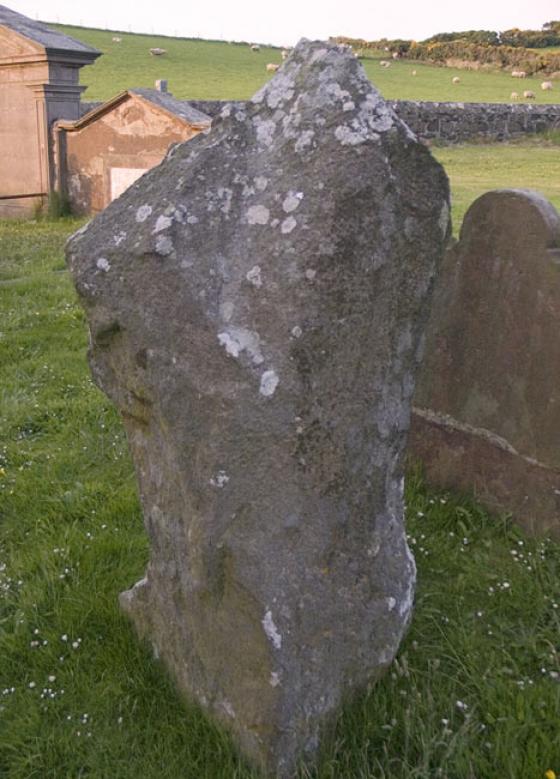John Hewitt wrote a poem about this site. It was originally called “Oisin’s Grave: the horned cairn at Lubitavish, Co Antrim,” later in his collected works as “Ossian’s Grave, Lubitavish, Co Antrim.”
Ossian’s Grave, Lubitavish, County Antrim
We stood and pondered on the stones
whose plan displays their pattern still;
the small blunt arc, and, sill by sill,
the pockets stripped of shards and bones.
The legend has it, Ossian lies
beneath this landmark on the hill,
asleep till Fionn and Oscar rise
to summon his old bardic skill
in hosting their last enterprise.
This, stricter scholarship denies,
declares this megalithic form
millennia older than his time –
if such lived ever, out of rime –
was shaped beneath Sardinian skies,
was coasted round the capes of Spain,
brought here through black Biscayan storm,
to keep men’s hearts in mind of home
and its tall Sun God, wise and warm,
across the walls of toppling foam,
against this twilight and the rain.
I cannot tell; would ask no proof;
let either story stand for true,
as heart or head shall rule. Enough
that, our long meditation done,
as we paced down the broken lane
by the dark hillside’s holly trees,
a great white horse with lifted knees
came stepping past us, and we knew
his rider was no tinker’s son.
Sydney Bell, a local poet, wrote:
Ossian’s Grave, Lubitavish
They say
It was here where Ossian died:
I wonder if bright-haired Niamh cried?
Whose lonely fingers piled the cairn
And heaped it high with maiden fern?
They say
That only the plovers know
The feet that track the drifted snow,
And the peeweets cry
Though they’ve never seen--
The name of one who loved Ossian.
I hope and I hope
That he found somewhere
His slender Niamh of the yellow hair
For theirs was a song too brief to scan
With a rickle of bones
And a blind blind man.
(note: blind is also the meaning of the River Dall, part of the name of the village nearby of Cushendall, “at the foot of the Dall”--water emerging unseen from the barren and dignified hillsides north of Glenaan.)
Sources:
Maureen Donnelly. The Nine Glens. rev. ed. Coleraine & Ballycastle: Impact Printing, 2000. (for Bell poem.)
John Hewitt. Collected Poems. ed. Frank Ormsby. Belfast: Blackstaff, 1991.





























